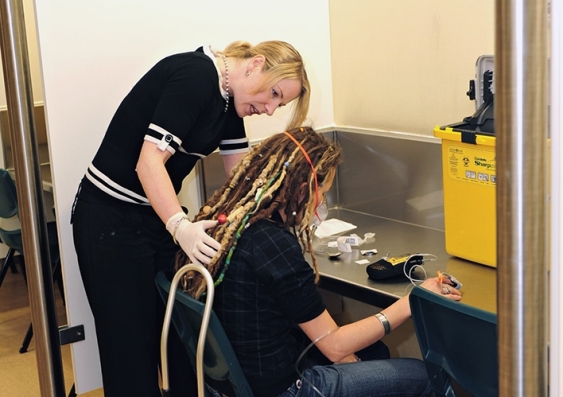Prescription opioids linked to serious falls in adults
2024-02-20T09:25:00+11:00

Photo: Adobe Stock
A study in 3.2 million people has investigated the association between prescription opioid use and falls.
Prescription opioid use is associated with an increased risk of serious falls, a study led by UNSW Sydney researchers has found.
The scientists at the National Drug and Alcohol Research Centre (NDARC) showed the risk of falls increased for adults of all ages and was highest for people aged 85 years and over, and the risk of falls was higher during the first month of treatment, and when opioids were used at higher daily doses.
This Australian-first study, published today in , is one of the largest of its kind ā it examined falls that led to emergency department visits, hospital admissions, and death in 3.2 million people who started an opioid medicine in NSW over a 16-year period.
Lead author and Postdoctoral Research Fellow Dr Ria Hopkins said the study found that current opioid use was associated with a substantial risk of a serious fall among all age groups.
āOverall, one in 10 people in the cohort experienced a serious fall during the study period, with higher rates among periods of opioid use compared to periods of no opioid use,ā she said.
āCompared to younger adults (18-44 years), the risk of a serious fall was six times higher for people aged 85 years and over during periods of opioid use, after accounting for other medicines and factors which may increase the risk of falls.ā
Falls are a major cause of injury in Australia, and older people are at particular risk of serious negative consequences, including major injury and death.
āAlthough we expected to see increased fall risk among older individuals, we were surprised by how many falls there were among younger adults which resulted in emergency department visits and hospitalisations,ā Dr Hopkins said.
āThese findings demonstrate the need for doctors to be aware of, and inform people of all ages about, the risks of these types of injuries when starting or continuing opioid medicines.ā
The researcher identified the month immediately following opioid initiation as a time of particularly high risk for serious falls among adults of all ages, and risk increased as daily doses of opioids increased.
Opioid risks in all age groups
Over the last 30 years, there have been concerns about the safety and appropriateness of opioid prescribing. One key concern is the potential for opioid use to increase the risk of falling among older adults due to the sedating effects of these medicines.
This study provides new data demonstrating that this risk is not exclusive to older adults and that fall prevention and education should be considered for all adults prescribed opioids, particularly when beginning treatment.
Senior author Scientia Associate Professor Natasa Gisev said the findings showed that falls are a relatively common adverse event among people using prescription opioids.
āMany falls are preventable, and whilst there is a large focus on interventions aimed at preventing falls among older adults, more work is needed to reduce the risk among younger adult populations,ā she said.
The , a retrospective cohort of NSW residents who initiated a prescription opioid through the Pharmaceutical Benefits Scheme between 2003 and 2018, provided the study cohort analysed in this publication.
People can access free and confidential advice about alcohol and other drugs by calling the National Alcohol and Other Drug Hotline on 1800 250 015.
Media enquiries
Isabelle Dubach, Senior News & Content Manager
°Õ±š±ō:Ģż+61 432 307 244
·”³¾²¹¾±±ō:Ģżi.dubach@unsw.edu.au
Related stories
-

Novel drugs are leading to rising overdose deaths in Victoria ā drug checking services could help
-

Five drug-induced deaths per day in Australia in 2021: new report
-

Evidence of injecting drug use found in 190 countries: global review
-

Recognising signs of overdose earlier leads to better health and social outcomes: study



